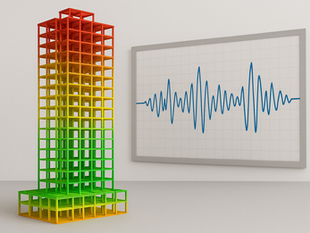
From Foundations to Pinnacles: The Journey of Tower Design
5
22
0
The allure of towers has captivated humanity for centuries. From the ancient wonders of the Lighthouse of Alexandria to the modern marvels like the Burj Khalifa, towers symbolize ambition, innovation, and the human desire to reach for the skies. But behind their iconic silhouettes lies a fascinating journey of design and engineering, transforming lofty ideas into towering realities.

The Foundation: Setting the Stage for Greatness
Every great tower begins with a solid foundation. Beyond the physical groundwork lies the conceptual foundation—an understanding of the tower’s purpose. Is it a beacon of power, like the Eiffel Tower? A hub of functionality, like the Shard? Or a bold statement of innovation, like Tokyo Sky tree? Architects and engineers collaborate to define the tower's intent, often balancing aesthetic aspirations with practical needs.
Once the vision is clear, literal groundwork begins. Building a tower requires overcoming unique challenges, such as soil conditions, seismic activity, and the ability to bear immense weight. The foundation must not only support the structure but also anticipate and counteract environmental forces that could compromise its integrity.
The Core: Marrying Form and Function
As the design progresses upward, architects and engineers work together to shape the tower's form and function. In contemporary tower design, this often involves integrating advanced materials and technologies. Steel and reinforced concrete remain staples, but innovations like carbon fiber and smart glass are increasingly common.
Sustainability has also become a defining feature of modern towers. Features like wind turbines, solar panels, and green walls are often integrated to reduce environmental impact and improve energy efficiency. For example, Bosco Verticale in Milan combines high-rise living with urban forestry, demonstrating how towers can serve as eco-friendly habitats.
The Cladding: Aesthetics in the Sky
The external appearance of a tower—the cladding—is its identity. A tower’s façade can tell a story, reflect its surroundings, or stand out as an architectural marvel. Glass, metal, and composite materials are common choices, often chosen to maximize natural light or reduce glare.
Iconic towers often find their place in cultural memory due to their distinctive designs. Think of the Chrysler Building’s Art Deco elegance or the futuristic, spiraling form of the Shanghai Tower. These designs are not just visually striking but also functional, reducing wind resistance and enhancing structural stability.
The Pinnacle: Reaching for the Sky
The pinnacle of a tower often serves as its crowning glory. Whether it’s a spire, antenna, or observation deck, this feature pushes the limits of height and human imagination. Pinnacles are often where symbolism and engineering collide—showcasing humanity’s desire to transcend physical boundaries.
Achieving these heights requires overcoming immense challenges, such as wind loads that increase exponentially with elevation. Advanced simulations and cutting-edge technology are employed to ensure stability while maintaining the tower’s aesthetic appeal.
The Legacy: Towers as Timeless Icons
Once completed, a tower doesn’t just become part of the skyline—it shapes it. Towers influence the way cities are perceived, becoming landmarks that draw visitors, inspire residents, and stand as symbols of progress.
The journey from foundation to pinnacle is more than just a process of construction; it’s a testament to human ambition and ingenuity. As cities grow denser and technology evolves, towers will continue to rise—each one telling a unique story of the era in which it was built.
Conclusion: Looking Upward
The design and construction of towers embody a blend of art, science, and purpose. From their roots deep in the earth to their pinnacles brushing the clouds, towers remind us of the heights humanity can achieve. As architects and engineers continue to innovate, the future promises even more extraordinary vertical journeys, shaping skylines and redefining what it means to build for the skies.






